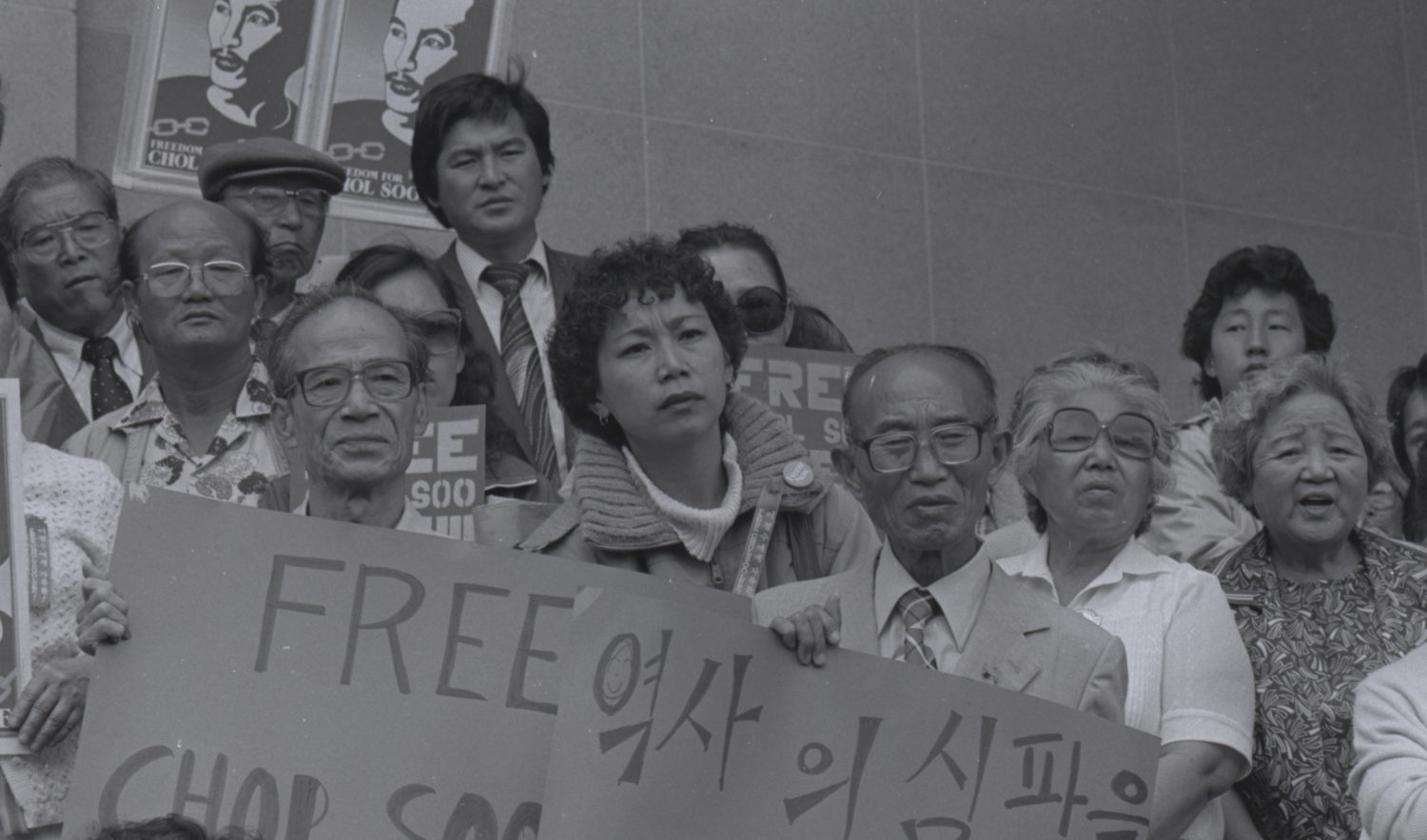In Southern California, Asian Pacific American Heritage Month always arrives with a slate of incredible AAPI-centered events, from film screenings to parades and many more. But Angelenos may have noticed one beloved event missing from lineups the past two years—the Los Angeles Asian Pacific Film Festival.
Well, the wait is finally over. After undergoing hybrid formats and scheduling changes, the LAAPFF made a triumphant return to APAHM, opening on May 5 and closing on May 13. Directed by Visual Communications, this year’s edition took place at the Director’s Guild of America as well as the festival’s traditional home in Little Tokyo. The schedule included screenings of Sundance Film Festival hits like “Free Chol Soo Lee” and “Every Day in Kaimuki,” in addition to a robust roster of narrative features, short films and animation programs.
Get to know some of the filmmakers presenting work at the 27th annual LAAPFF, and make sure to grab your tickets before the festival closes on Friday!
Text by Cu Fleshman
Starring Ally Maki, Hayden Szeto and Dana Lee, the dramedy “Dealing With Dad” follows Margaret (Maki) and her two brothers as they grapple with their father’s sudden descent into clinical depression. As the three siblings reminisce on their childhoods, learn more about their family and contend with their often-overbearing mother, the trio find themselves questioning whether or not they truly want their dad to get better. The film screened at the Director’s Guild of America this past Saturday, May 7.
Shortly before the LAAPFF premiere, director Tom Huang shared his inspirations behind “Dealing With Dad” and how it feels to see the film play at an AAPI-focused fest.
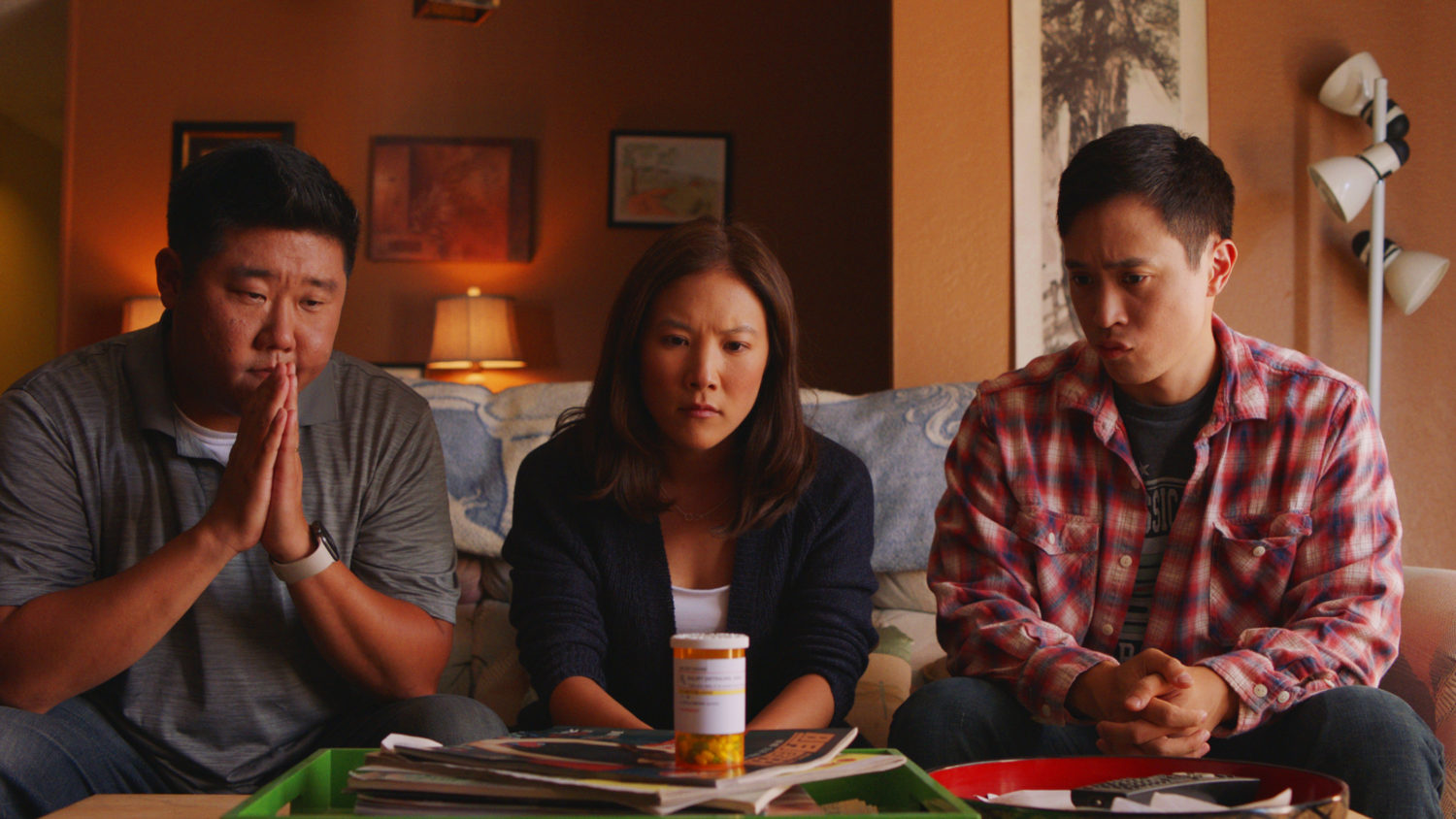
CM: What made you want to create a film that focuses on mental health among Asian American communities, especially the older generations?
Tom Huang: So, this film is based on my experience trying to get my dad out of depression. It took us about eight years and a lot of why it took so long was A, us trying to understand what depression was, but B, also trying to get his family and our family to understand that it is a disease. It’s not just an emotion. Especially in immigrant Asian communities, depression isn’t considered a disease, it’s actually considered a weakness. When someone exhibits these kinds of symptoms, people think, ‘Oh, he’s lazy,’ or, ‘He’ll be fine, he just needs to get out and exercise more.’ Once we got everyone on board, it was a little easier to get the support he needed to see a doctor. It’s hard enough for me to get my parents to see a doctor if their leg is broken, much less depression. After that experience, I really wanted to make something to get that discussion of depression going among audiences in our community.
My dad was also very strict with me all my life and always was more interested in trying to see how he could make me succeed in life, as opposed to getting to know me. But when he got depressed, that hard veneer he put up melted away. And he actually started talking to me and telling me stories about his life that he’d never told before.
Dana Lee is perfect as that super strict dad in the film. How did you decide to explore that conflict from the perspective of a woman who’s not just a daughter, but also a mother too?
When I first wrote the script, the main character was male, like myself. Then as I was writing, I realized it’d be 10 times more interesting if [the protagonist] was female, because of all the bullsh*t Chinese immigrant daughters have to put up with. The film has depression as the background, but really, it’s about Margaret trying to figure out her relationship with her dad. There are a lot of people who wish they were closer to their parents, and that’s what I was looking for with this film. What do you do when you feel like you need to have a relationship with the people in your family that you love and also hate? How do you deal with that? And it’s a hard question. The dad in this film is a real jerk, but at the same time, Margaret knows he cares for her in his own, screwed-up way. How do you reconcile that? She does it in her way in this film, and I hope people in that situation try to do something about it as opposed to letting things go as they are. I tried to ask questions and not tell people how they should live their life.
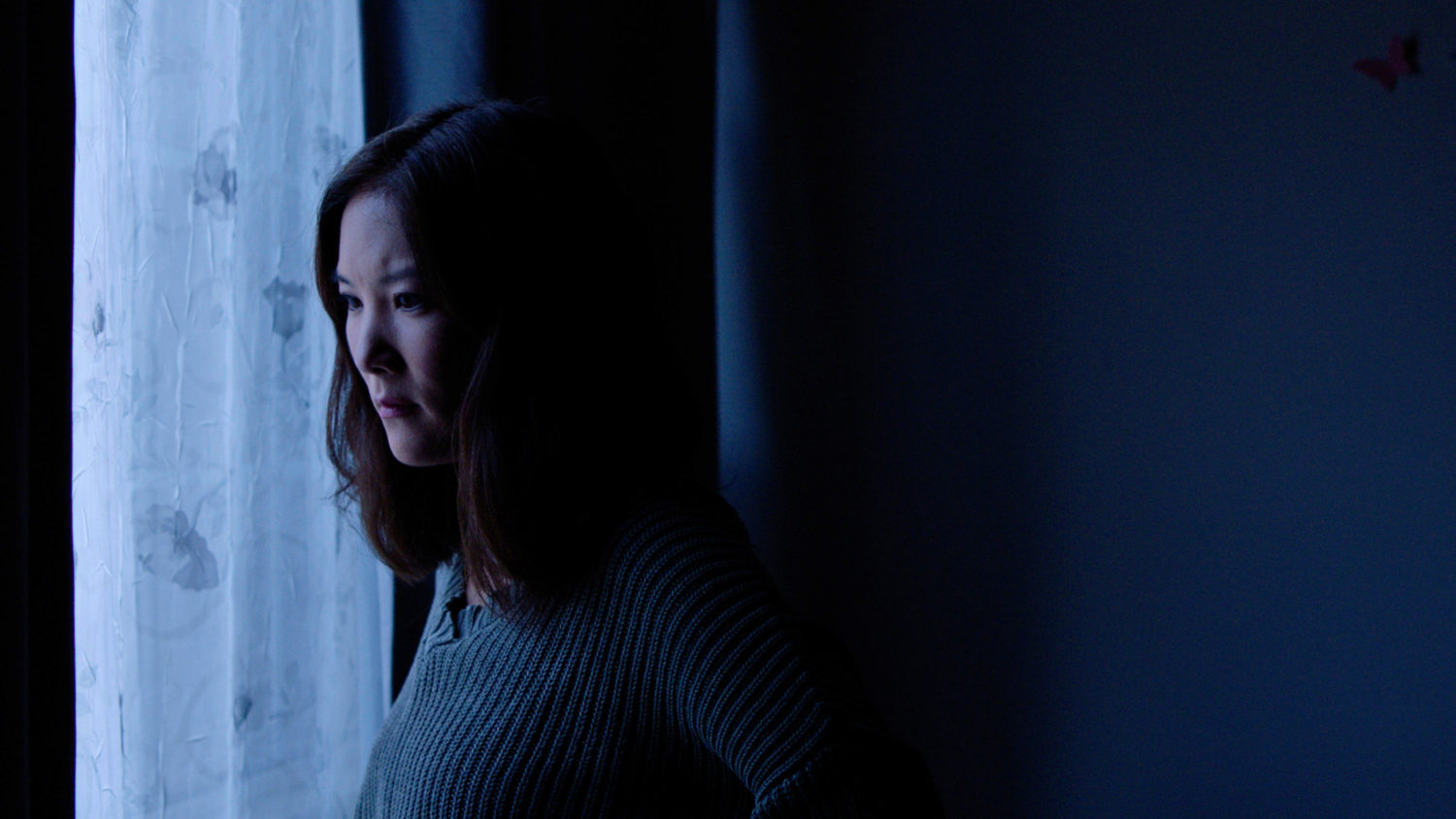
You also address the concept of filial piety throughout the film, and the expectation in many immigrant cultures that children should care for their elderly parents. Can you share more about how you wove that in?
I’m having to take care of my parents now, and they’re very strong-willed people. And with some cultures, you’re expected to take care of the family. That’s why they birth you, so that you can take care of them later. I never got that impression with my parents. They were so fiercely independent that when their health started failing, they would not admit it. And I had to force my way in there, to make sure that they’re taken care of, and it’s hard. That’s what happens with Margaret. The thing with Margaret in this film is that she knows what the right thing to do is, as hard as it is, which is to get her dad better. Those are the kinds of things people will start experiencing as they grow older. When you grow up as a kid, it’s like, ‘Get a good job, or go to college or have kids.’ But they never tell you, ‘Oh, by the way, you’re taking care of your parents when they can’t take care of themselves later.’ A lot of people don’t discover that until it actually happens, and then you’re lost and trying to figure out how to get things done. That’s what I wanted to show here and hopefully have people start talking about, this moment where you realize that at some point in your life you become parents to your kids and your parents.
With this in mind, I also wanted to ask, how does it feel to have ‘Dealing With Dad’s Los Angeles premiere at the LAAPFF?
My first feature was here and won the Audience Award, and I come every year to try to catch a couple of films, so it’s like family. It’s really special to me for so many reasons.
We’ve played eight festivals already in the past six weeks, most of them non-Asian American festivals. What’s really gratifying is that people relate to this family as an American family, they don’t see them as an Asian American family. That’s my original idea, for this film to be a universal film so people of any American culture can relate, but at the same time I also wrote this film for Asian Americans. I know people are hungry to see Asian Americans as Asian Americans on the screen, so to be able to show it to an Asian American audience who went through the same things I went through—wondering why there are no Asian people in New York when you watch ‘F.R.I.E.N.D.S.,’ why Emma Stone had to be cast as an Asian American—this film is for them as well, to see themselves up there.
And this is actually the first time the cast and crew has seen the film. Ally hasn’t seen it in a theater, none of the main cast has. I’m really excited for them to see it with an audience, to see people react to the amazing work they’ve done and to get appreciation for what this film can be.
“Bad Axe”
Text by Caroline Yu
The documentary “Bad Axe”—which originally premiered at the South by Southwest Festival earlier this year—follows a family of Cambodian and Mexican American Michiganders living in their Trump-supporting, yet beloved hometown through the first year of the COVID-19 pandemic. Although beginning their own adult lives outside of Bad Axe, the Siev siblings return home to be close to their parents and help out with the family restaurant during unprecedented government shutdowns. As the family struggles through present fears of catching COVID-19 and being racially targeted, they must also reckon with the generational past their father and grandmother endured—the Killing Fields in Cambodia.
We sat down with the film’s director, David Siev, and the rest of the Siev family—father Chun, mother Rachel and eldest sibling, Jaclyn, at the LAAPFF to chat about the film.
Did you know what this film was going to be about, going into shooting?
David Siev: I always knew I wanted to share my family story, specifically my parents’. With my dad being a Cambodian refugee and my mom being Mexican American, these are two individuals who are such hard, passionate workers, that don’t have an education beyond a high school diploma. The two of them really worked together to lay the foundation for this American dream that we all built as a family. I didn’t know the medium in which I would tell that story, whether it would be a narrative or a documentary.
Once the pandemic happened and my fiancee and I moved back home, I had all the free time in the world, so I just sat down with them for hours getting the history of their American dream, and the second part was just filming life every day, as it was. I don’t think [there was] intention at that moment other than that we were all young adults that came back home to nest, and it was a unique time to capture all these memories. Once I began seeing the parallels beginning to form between all these stories, I realized [what it was about]. There was also all this footage of everybody living their life during the pandemic, and I realized, ‘Wow. We’re still trying to keep that very same dream alive during a very uncertain time.’

This film is first and foremost about familial love, but themes of racism and intergenerational hardships are tackled too. What made you interested in showcasing those particular issues?
DS: It’s impossible to talk about the American dream in 2020 without mentioning politics and racial reckoning, and the transgenerational trauma of my dad, how he viewed everything that was happening versus how [my sister] Jaclyn was doing everything that was happening, so when you’re painting a portrait of an American family, that’s what I want to do. Our family is more American than any, so that’s why it was important to talk about all those different themes.
Cultural narratives in the U.S. sometimes ignore the fact that people of color and minorities are present in every community, no matter how rural or how outnumbered they may be. Did you consider this idea at all while making this film?
Jaclyn Siev: Growing up, we obviously knew we were different, because Bad Axe is 97.5% white. There’s a lot of small towns in Michigan, in the Midwest, in the whole country, so to be able to represent the minorities that [live] in these rural communities or conservative communities was really important to us, because so many people do. They might be different, but they live in these towns. We don’t just live there, we have a family restaurant there; we thrive there and we are part of the community. So, when we see some people turn against us, it breaks your heart because you’re like, ‘This is my town.’ We’re just as much a part of Bad Axe, as much American, as everybody here. It was a struggle for us, and it’s something a lot of other minorities who live in these small towns struggle with as well, in these communities where maybe they’re different but they’re still part of the community. Bad Axe is what made our family who we are—we needed that small town to help shape us into the people we are.
DS: It’s an unconditional love [for Bad Axe]. That’s what’s been amazing for me, being able to have discussions with people after the film. When other people of color or Asian Americans say, ‘Oh, my God, you’ve captured my experience,’ that’s a really great feeling, because it makes it like, ‘OK, we’re not alone.’

Chun and Rachel, were you comfortable with going through this filmmaking process and diving so deeply into the past like you did?
Rachel Siev: [The filmmaking process] was just natural and normal, but David’s always doing that. However, there were times I was like, ‘Shut that camera off!’ and he was very respectful, making his decisions on what to include.
Chun Siev: When he first picked up his camera and shot it, until we saw the final product, I’ve never been so proud of my children. For their generation, and for many other people that are still living in fear of speaking out [because] it might affect their family, the family business. When I think about ‘Bad Axe,’ after David put it all together, it killed me every bit. It’s so inspiring as a parent to raise outspoken children in times like that. There’s a time at one point in that film, when I was talking about 2020—I was so scared. I was more fearful during 2020 than living through the Killing Fields. When I was living during the Killing Fields in Cambodia as a young teenager, I really didn’t have time to be scared. At my age, I witnessed more than 40 people being executed right in front of me. During that time, [especially] as a teenager, you’re kind of numb to that. [Then] you become a father. What are you going to do? The number one thing about the pandemic, you know everybody is dying without dignity. You don’t even get to see your children, or your loved ones next to you. As a parent getting older, it was pretty scary, and the other thing is the injustice of racism. Like I said in the movie, I never felt so scared. But, [also], so proud to see these kids willing to do what they’re doing.
You call ‘Bad Axe’ a love letter to your family and Bad Axe itself. Yet there are moments in the documentary where the making of the film caused conflict between your family and your hometown. Ultimately, did creating this film throughout the pandemic change the relationship you hold to your hometown in any way?
CS: When I came to Bad Axe 25 years ago as an Asian American—as a minority living in a community of white people—you had to have a thick skin, not let anything or anybody [hurt you]. You’re like, ‘OK, get numb to it; get used to it.’ That’s the way it is. But generations are different. Now, our children are not afraid to speak out. After the movie, the community got to see the true colors of how we are good people. We just want to do business the best way we know how. Regardless of our differences, we will treat you with respect. And in return, all we want is for you to treat us with respect. We don’t want to be treated differently. Did the movie make the restaurant better? I say yes, because now people finally get to see we are good people.
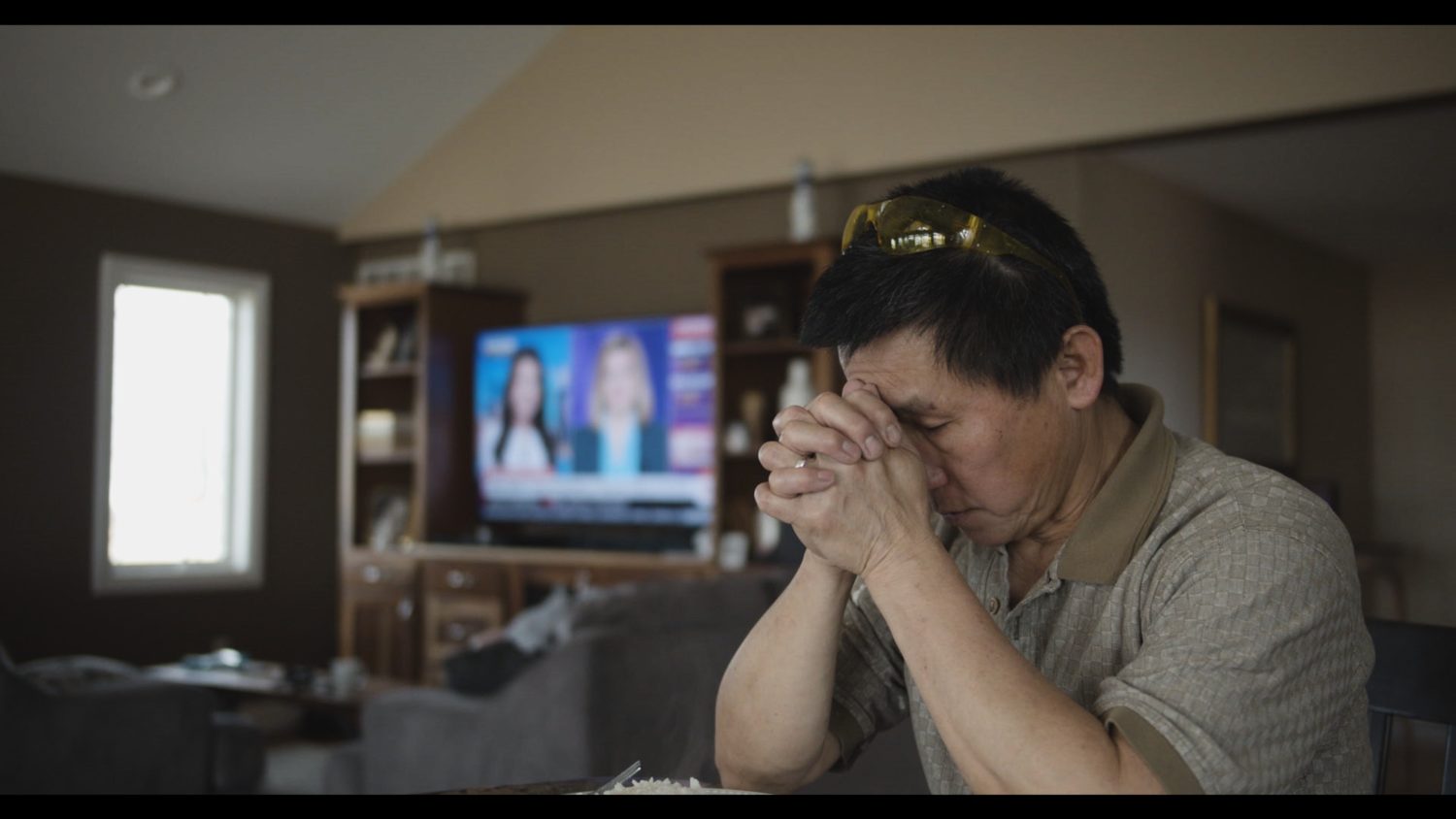
RS: One lady apologized, actually.
DS: Yeah, we just showed the film for the first time in Bad Axe, and it was very cool. It was for the community of Bad Axe in a sense, the people who helped crowdfund and make the film possible. But we also were able to open up a number of seats to the public, and some of those people included those who said they didn’t want to support the film, and made it a point they didn’t believe in a lot of the topics we were talking about. To hear those people’s reactions after the film, saying, ‘Wow, I understand this is Bad Axe through your eyes, and I might not agree with the politics of your family, but that’s not what the film is about.’ The film is really about showing the power of love and family.
JS: She said, ‘It opened my eyes to your family.’ That was the whole point of it. It’s about our family and our experiences living in this town, and to come to us and tell us how much you loved it, how much you know it’s changed you, the whole point of the movie was to help you see the world through someone different than you. [Bad Axe] doesn’t have to change. It’s just for you to see that [a different perspective] exists. For some reason, there was this narrative that existed where people thought the film was a smear piece on Bad Axe, [with] this terrible tone, but we love Bad Axe. We consider ourselves Bad Axe, so why would we smear [ourselves]? We have our differences and we have our faults, but that doesn’t mean we can’t come out stronger.
In our family we have all these conflicting personalities, but we still love each other. What I will say is the response to the film has made me feel good about the decision that [my husband] Mike and I made as a family, to move back to Bad Axe. That is where we are going to raise our family, just like my parents raised us. I’ve felt more at peace with our decision now than I probably ever have.
How does it feel to have your film screen at the LAAPFF?
DS: I’ve always wanted to screen at the L.A. Asian Pacific Film Festival. It’s such an honor, let alone at the Directors Guild of America. Being able to share this experience with the Asian American community, it’s hard to put into words, but I’m just so excited. This is our first time showing it to a primarily Asian American audience.
JS: [I’m] growing a sense of pride that we get to be one of so many stories to represent this amazing Asian American community that exists everywhere in the country.
“Free Chol Soo Lee”
Text by Jasmine Nguyen
“Free Chol Soo Lee,” a 90-minute documentary co-directed by journalists Julie Ha and Eugene Yi, covers one of the most prominent events to launch pan-Asian activism. The documentary follows Lee, a Korean immigrant, who faced wrongful imprisonment over a San Francisco Chinatown gang murder in 1974. His plight united a variety of individuals within the AAPI community, from college activists to churchgoers, to fight against his conviction. The documentary not only covers the events of the trial but Lee’s life after his conviction was overturned.
We sat down with Ha for a conversation about the documentary.
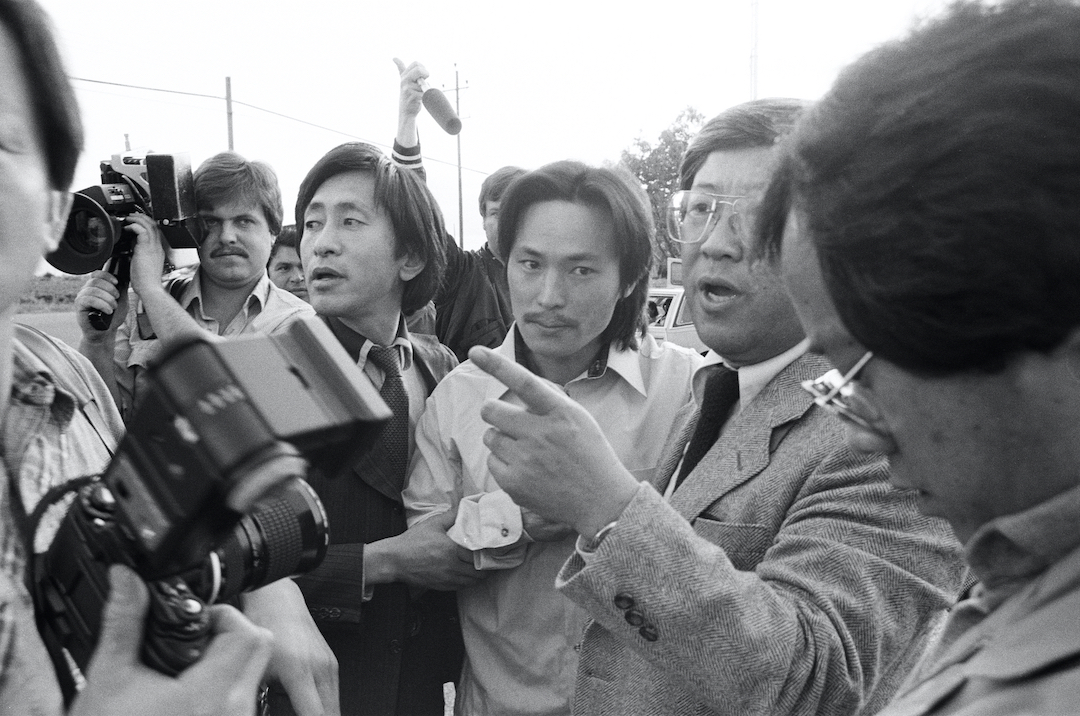
What about Chol Soo Lee’s story made you want to create a documentary about him?
Julie Ha: I actually had no aspirations to make a film. It was my directing partner, Eugene Yi, who asked me if I wanted to make a film with him. We had worked together at KoreAm Journal and we had always enjoyed working together. So he’s like, ‘Let’s make a film together.’ And if it had been any other time I might have said, ‘No, that’s okay. I don’t really want to make a film.’ But he happened to ask me at a time when I couldn’t get the Chol Soo Lee story out of my head. And that’s because a year earlier, I had gone to the funeral of Chol Soo Lee, who passed away at age 62. It was this modest Buddhist funeral in San Francisco; K. W. Lee was there and many of the activists who had come to Chol Soo’s aid were there. There was this feeling there that was beyond grief, and that heaviness just stayed with me for a long time. So, when Eugene said, ‘Let’s make a film together,’ I said, ‘Well, somebody really needs to make a film about Chol Soo Lee.’ We share a passion for telling Asian American stories with depth and nuance. especially complicated [stories]. We just felt the story literally beckoning us to tell it.
What do you hope younger generations in the audience will take away from this story, which took place almost 50 years ago?
We never want to be prescriptive with the film. We want people to personalize it, because it’s gonna have different meanings to different people. I found out about the story when I was 18 years old, that’s when I first met K.W. Lee and learned there was even a Korean man who was wrongfully convicted of murder and put in prison for 10 years, and then a journalist and a group of Asian Americans were able to free him. To learn something like that when you’re 18 years old, it changes your whole worldview, how you see people in your own community and the way you see your role in the larger society. So, I understand the power of the story. There’s no other story like it. And the crazy thing is, this is the truth. This is what happened. We’re not making this up.
When you think about 40 years ago, what Chol Soo Lee’s case did for a whole generation of Asian Americans back then, many of the activists who were younger at the time were inspired to become defense lawyers, public defenders, youth advocates, educators, nonprofit leaders, to dedicate their lives to social justice in the public good.That’s an incredible legacy. But it doesn’t have to end there; it shouldn’t. Eugene and I knew if we could tell the story anew, we could help to create a lasting, meaningful legacy moving forward.

What did you want a non-Asian audience to take from this film?
We’ve always felt our film had the potential to change the way the public at large sees Asian Americans. Sadly, even in 2022, our community is still not seen as fully human. That’s really tragic to say; we’re living in an age where it’s open season on people who look like us. Our film goes a long way in humanizing us. In our film, we get to be the victims of racial profiling; we get to be the hard-charging investigative reporter who discovers this injustice and writes about it. We get to be the group of people young and old, politically conservative and politically radical, who come together in unprecedented fashion, and stand up to the criminal justice system and say, ‘You did wrong and we’re going to right this wrong.’ That’s such a profound story.
How do you feel about having your film screen at LAAPFF?
It’s so thrilling because it feels like a hometown screening for Eugene and me. We are both from Los Angeles, with family and friends coming. Also, I go way back with Visual Communications. When I was a reporter for Rafu Shimpo, a Japanese newspaper, I used to just interview the staff. I used to cover the film festival for the paper, and even in KoreAm Journal. I can’t believe now I’m here presenting. It’s just a crazy, amazing part of this journey.
